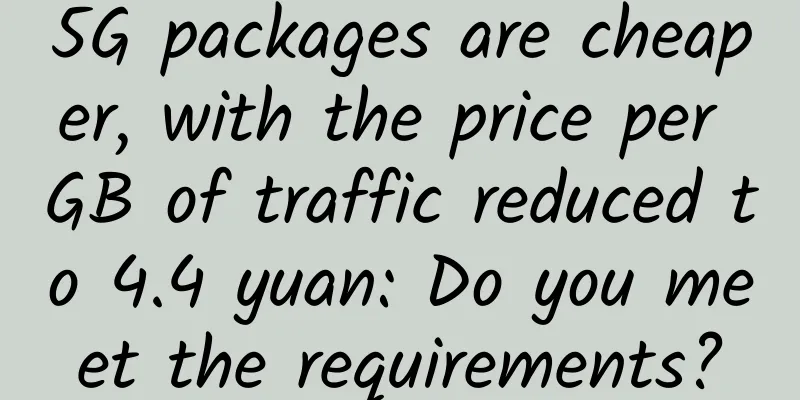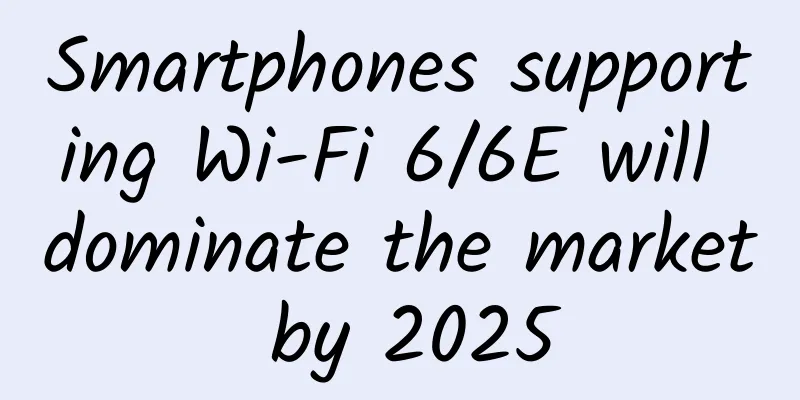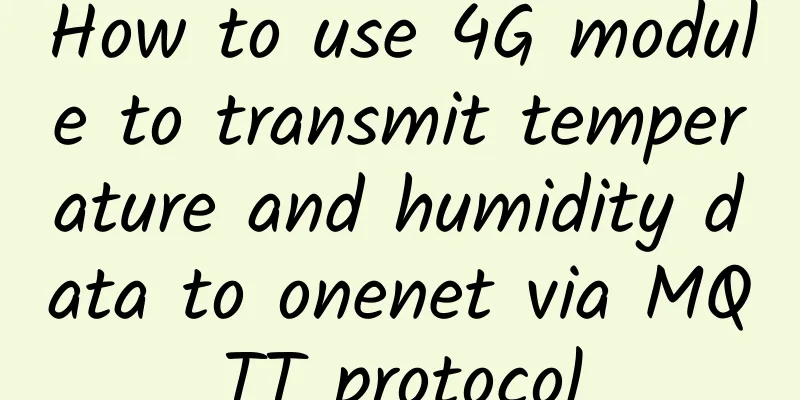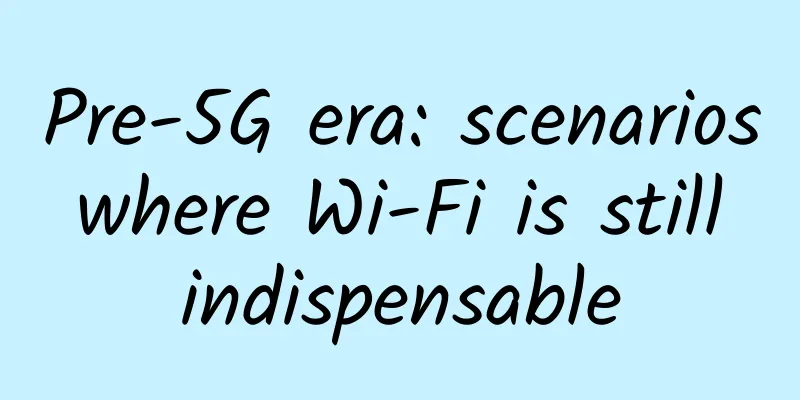How is the operator's name displayed on your phone?

|
This article is reprinted from the WeChat public account "Wireless Deep Sea", written by Fei Caicai. Please contact the Wireless Deep Sea public account to reprint this article. The name of the operator must be displayed on everyone’s mobile phone. The name of the operator will be displayed depending on whose SIM card you use to pay. In China, these are generally China Mobile, China Telecom and China Unicom. If you roam overseas, the name of the foreign operator will generally be displayed. So the question is, how can a mobile phone distinguish the networks of different operators? How are the names of these networks displayed on the mobile phone? It all starts with PLMN. 1. What is PLMN? The full name of PLMN is Public Land Mobile Network, which is a network composed of base stations, core networks and other equipment that allows mobile phones to make calls and surf the Internet. The 2G, 3G, 4G, 5G, etc. that we often talk about all belong to public land mobile networks, and use PLMN numbers to identify which country and operator the network belongs to. The PLMN ID consists of two parts: the Mobile Country Code (MCC) and the Mobile Network Code (MNC). A set of MCC+MNC uniquely identifies a network. The mobile country code consists of three digits. China's mobile country code is 460. The mobile network code is two digits, starting from 00. Different operators may have multiple network codes. For example, China Mobile's mobile network codes are 00 and 02, China Unicom is 01, and China Telecom is 03. If we see the five digits 46001, we know that this represents China Unicom's network. The figure below shows the mobile network codes of major operators in China. The key to a mobile phone identifying which network it is using is to identify the PLMN. Therefore, to provide services, each cell must continuously broadcast the PLMN number so that the mobile phone can access the correct wireless network, and then connect to the corresponding core network and provide services. Imagine if a China Unicom user tries to access China Telecom's network, if he is not roaming, the only result is that the authentication fails, he will be judged as an illegal user and denied access. 2. What are the types of PLMNs? For each mobile phone, how should it deal with different PLMNs? This requires marking the PLMNs from different sources. Mobile phones divide PLMN into the following categories based on their own situations. HPLMN: Home PLMN. It is the PLMN to which the terminal user belongs. In other words, the MCC and MNC contained in the IMSI number on the mobile phone SIM card are consistent with the MCC and MNC on the HPLMN. For a certain user, there is only one PLMN to which he belongs. EPLMN: Equivalent PLMN. It is a PLMN that is on the same level as the PLMN currently selected by the mobile phone. For example, mobile has multiple mobile network codes, that is, multiple PLMN IDs, but these are all served by mobile, so they are equivalent PLMNs. VPLMN: Visited PLMN. It is the PLMN visited by the user. Its PLMN is not exactly the same as the MCC and MNC of the IMSI stored in the SIM card. For example, when a user roams to another country and the mobile phone is connected to a foreign operator, the PLMN of this operator is called a visited VPLMN. 3. How is the operator name displayed? PLMN ID is a string of numbers that can identify the operator, but it is not very user-friendly. If the number displayed on the phone is 46001, I am afraid that few people know what it means. Therefore, the names of operators such as China Mobile, China Unicom, and China Telecom are displayed on the mobile phone. Not only is it simple and clear, it is also a means of brand promotion: Look at me, China Mobile, the signal is just right! However, sometimes the name of the operator is not the same as the name of the actual network provider. This situation is common among virtual operators, which usually only have core networks, while access networks and bearer networks are rented from the three major operators, including China Mobile, China Unicom, and China Telecom. Alternatively, China Radio and Television and China Mobile jointly built and shared. Radio and Television did not have a network at the beginning, and shared China Mobile's 2G and 4G through roaming. This resulted in the problem that the operator providing the service was Radio and Television, but the network was China Mobile. Since the mobile network only broadcasts the mobile PLMN, how should it be displayed on the mobile phone after the radio and television users access it? It is necessary to introduce another concept: SPN. Its full name is Service Provider Name, which is the service provider name. The network identified by PLMN is called PNN. Its full name is PLMN Network Name. For traditional operators, the network is their own and the services are also provided by themselves, so SPN and PNN are the same. But for virtual operators, SPN and PNN are different. No matter who owns the network, it is just a pipeline, and providing popular services is the key. Generally speaking, information such as SPN and PNN is stored in the SIM card of the mobile phone. The operator name displayed on the mobile phone is determined by the PLMN of the access network and some rules. In addition, when a mobile phone accesses the network, the core network may also send the network name to the mobile phone, but its priority is lower than the SPN and PNN stored in the SIM card. The default rule is: when the mobile phone is connected to the HPLMN, the SPN is displayed; when it is connected to the VPLMN, the PNN is displayed. But in a file in the SIM card, there are two bits that can modify the above display rules: Bit 1: When the PLMN connected to the mobile phone is HPLMN, if the value of this bit is 0, the PNN does not need to be displayed; if the value of this bit is 1, the PNN still needs to be displayed. Bit 2: When the PLMN connected to the mobile phone is a VPLMN, if the value of this bit is 0, the SPN needs to be displayed; if the value of this bit is 1, the SPN does not need to be displayed. Regardless of whether it is a physical operator or a virtual operator, or in domestic or international roaming scenarios, the correct operator name can be displayed according to the above rules. Well, that’s all for this issue. I hope it will be helpful to you. You are welcome to forward it. |
<<: IT teams abandon DIY SD-WAN for managed hybrid models
Recommend
2018 Huawei Global Financial Summit held in Beijing Future digital banking will be a fully connected platform
[51CTO.com original article] On April 25, Huawei ...
5G applications with over 100 million users have crossed the starting line
The development of 5G networks is in full swing. ...
Why is C-band spectrum important for 5G?
1. Introduction Synchronization is one of the mos...
Do you really understand the network process of IoT terminal devices connecting to the IoT platform?
Nowadays, we use a large number of IoT devices in...
How service mesh enables microservices networking
Service mesh is the latest hot networking technol...
[11.11] ZJI Double 11 additional Hong Kong Alibaba models 55% off monthly payment starting from 412 yuan
Late last month, we shared the news that ZJI star...
Bloomberg: China is winning the multi-trillion dollar war for 5G
The coronavirus has not slowed down China’s stead...
Three-minute review! A quick overview of 5G industry development trends in May 2021
After the rapid development in 2020, 2021 is a cr...
Illustrated explanation of the past and present of four IO models
Recently, I have come to believe that when explai...
CloudServer: $10/year-1GB/20GB/1TB/Los Angeles & Chicago & New York data centers
Netizens reported that CloudServer has a special ...
Megalayer: US VPS half price from 24 yuan/month, Hong Kong VPS half price from 29.5 yuan/month, dedicated server from 399 yuan/month
Megalayer's regular VPS half-price promotion ...
The 5G Revolution: Unveiling the Future of Healthcare
Evan Kirstel, Chief Digital Evangelist and Co-Fou...
Latest report: Is 5G private network a hero or a monster?
Whose product is 5G private network? A new report...
CloudCone Easter Sale: Los Angeles KVM Annual Payment Starting at $12.95
CloudCone's Easter promotion started on the m...
This article explains OSPF clearly.
[[426836]] OSPF OSPF is an IGP and a Link-State p...









